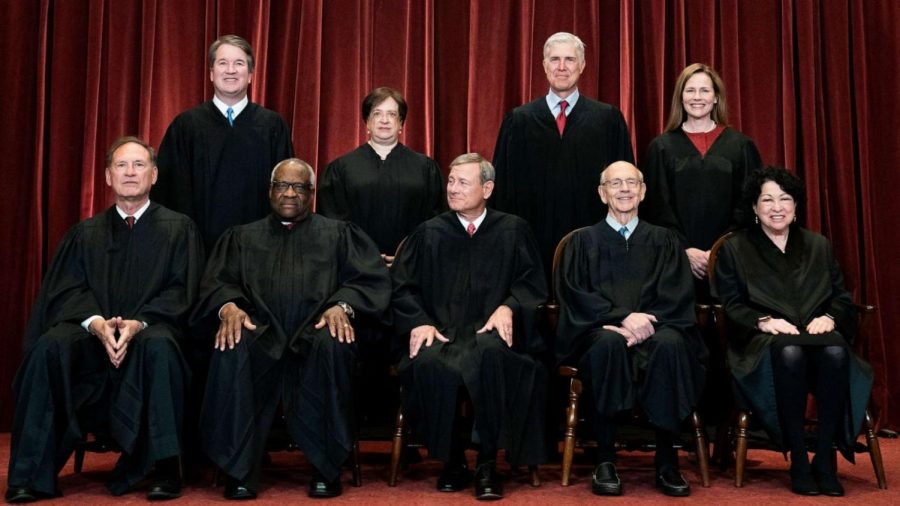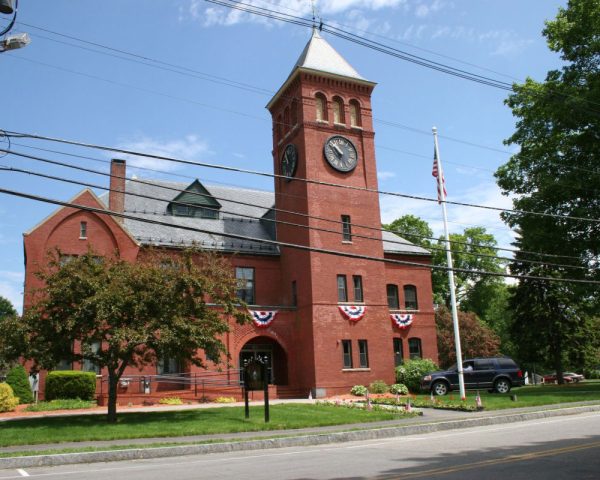Three Issues Before the Supreme Court This Term
October 28, 2021
Last week, on the 4th of October, the Supreme Court of the United States reconvened for their 2021-2022 term. The Supreme Court decides on consequential cases each year, but with public opinion of the court at an all time low, according to politico.com, and cases that spark an emotional reaction from some, this term may be one of the most controversial. Although the court decides on multiple cases each year, this term includes three cases with issues that have already grabbed both the public and the media’s attention. These include the death penalty, reproductive rights, and gun control. There are other cases, but this article will focus on three.
Issue #1- The Death Penalty: There are multiple cases involving the death penalty this term, but the most pubically known is United States v. Tsarnaev. In 2013, Dzhokhar Tsarnaev and his brother detonated two bombs near the finish line of the Boston Marathon, killing three and injuring hundreds. He was sentenced to death, but the U.S. Court of Appeals for the First Circuit reversed his death sentence on the grounds that the district court should have asked potential jurors what media coverage they had seen about Tsarnaev’s case and for excluding evidence related to another murder his brother was involved in.
The Supreme Court is seeking to answer whether the First Circuit Court erred in reversing Tsarnaev’s death sentence by using the district court’s failure to ask jurors for a specific account of the pretrial media coverage they had seen, and for its exclusion of evidence relating to Tsarnaev’s brother. Another interesting aspect of this case involves President Biden. In the 2020 election, Biden ran on a promise to end the federal death penalty. However, according to time.com, his Justice Department’s official stance on the case is asking the Supreme Court to reinstate his sentence, which would go against that promise.
Issue #2- Abortion: In 1973, the Supreme Court issued a ruling in Roe v. Wade that protected a woman’s right to an abortion without excessive government restriction. The Supreme Court reaffirmed the ruling in Roe in the 1992 case, Planned Parenthood v. Casey, but upheld some restrictions imposed on abortion. However, the central idea that existed in Roe still existed after this case as well. However, a case that will be decided during this term could essentially overturn both of these cases.
Here’s the background. In 2018, Mississippi passed a law called the “Gestational Age Act,”which prohibited abortion after 15 weeks. However, the only abortion clinic in the state (Jackson Women’s Health Organization) challenged the law, and won. They requested an Emergency Temporary Restraining Order (TRO) which was granted, and later the US Court of Appeals for the Fifth Circuit affirmed, preventing Mississippi from enforcing the law, according to oyez.org. Their decision was based on the court finding that Mississippi was unable to prove a fetus would be viable after 15 weeks. Supreme Court precedent prevents abortion being banned prior to fetus viability. The question the Supreme Court is seeking to answer in Dobbs V. Jackson Women’s Health Organization is whether or not MIssissippi’s law banning abortion after 15 weeks is unconstititional. However, some fear that if the court sides with Mississippi, the right to an abortion would cease to exist in certain parts of the country. Meanwhile, those opposed to abortion see this an oppurtunity to finally overturn Roe.
Issue #3- Gun Control: The issue of gun control has been a hot topic in America for quite a while, but the Supreme Court has not decided on a major case involving the 2nd Amendment in 11 years, this will change this term. The case involves two individuals named Robert Nash and Brandon Koch who sought to purchase a gun and obtain a conceal carry permit. The state of New York where they reside, as written from oyez.org , “requires those purchasing a gun to show a special need for self- protection to receive an unrestricted license to carry a concealed firearm outside the home.” After being rejected based on their failure to show proper cause/need for their concealed carry permit, they challenged the New York law. The U.S Court of Appeals for the 2nd Circuit and a District Court rejected their case, which is how it has ended up in the Supreme Court now. From scotusblog.com, the question the court is seeking to answer in its ruling is,“Does New York’s law requiring that applicants for unrestricted concealed-carry licenses demonstrate a special need for self-defense violates the Second Amendment?” By siding with Koch and Nash the court could make obtaining a firearm easier, because it would make requiring a “special need” unconstitutional.
Although every case that comes before the court deals with consequential issues, these three are examples of ones that have already garnered attention prior to them even being argued. For more information on what else is being argued before the court, check out oyez.org. They have every case this term and information on past cases.



